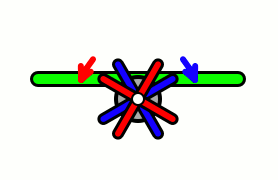Related Research Articles

The Vickers Wellington was a British twin-engined, long-range medium bomber. It was designed during the mid-1930s at Brooklands in Weybridge, Surrey. Led by Vickers-Armstrongs' chief designer Rex Pierson; a key feature of the aircraft is its geodetic airframe fuselage structure, which was principally designed by Barnes Wallis. Development had been started in response to Air Ministry Specification B.9/32, issued in the middle of 1932, for a bomber for the Royal Air Force.

Bristol Cars were manufacturers of hand-built luxury cars headquartered in Bristol, England. After being placed in receivership and being taken over in 2011, it entered liquidation in February 2020.

Weybridge is a town in the Borough of Elmbridge in Surrey, England, around 17 mi (27 km) southwest of central London. The settlement is recorded as Waigebrugge and Weibrugge in the 7th century and the name derives from a crossing point of the River Wey, which flows into the River Thames to the north of the town centre. The earliest evidence of human activity is from the Bronze Age. During the Anglo-Saxon and medieval periods, Weybridge was held by Chertsey Abbey.

Anzani was an engine manufacturer founded by the Italian Alessandro Anzani (1877–1956), which produced proprietary engines for aircraft, cars, boats, and motorcycles in factories in Britain, France and Italy.

Aircraft equipped with contra-rotating propellers, also referred to as CRP, coaxial contra-rotating propellers, or high-speed propellers, apply the maximum power of usually a single piston or turboprop engine to drive a pair of coaxial propellers in contra-rotation. Two propellers are arranged one behind the other, and power is transferred from the engine via a planetary gear or spur gear transmission. Contra-rotating propellers are also known as counter-rotating propellers, although counter-rotating propellers is much more widely used when referring to airscrews on separate non-coaxial shafts turning in opposite directions.

Frazer Nash was a brand of British sports car manufactured from 1922 first by Frazer Nash Limited founded by engineer Archibald Frazer-Nash. On its financial collapse in 1927 a new company, AFN Limited, was incorporated. Control of AFN passed to Harold John Aldington in 1929.

Addlestone is a town in Surrey, England. It is located approximately 18.6 mi (29.9 km) southwest of London. The town is the administrative centre of the Borough of Runnymede, of which it is the largest settlement.
Dowty Propellers is a British engineering company based in Brockworth, Gloucestershire that specialises in the manufacture, repair and overhaul of propellers and propeller components for customers around the world. It is owned by General Electric, forming part of its GE Aviation Systems division.
Vickers Limited was a British engineering conglomerate. The business began in Sheffield in 1828 as a steel foundry and became known for its church bells, going on to make shafts and propellers for ships, armour plate and then artillery. Entire large ships, cars, tanks and torpedoes followed. Airships and aircraft were added, and Vickers jet airliners were to remain in production until 1965.
Dowty Group was a leading British manufacturer of aircraft equipment. It was listed on the London Stock Exchange and was once a constituent of the FTSE 100 Index. The firm ceased operating as an individual entity following its acquisition by TI Group in 1992.
Captain Joseph "Mutt" Summers, was chief test pilot at Vickers-Armstrongs and Supermarine.
Hordern-Richmond was a British aeronautical engineering company that traded between 1937 and c. 1990.

Lang Propellers was a British company that manufactured aircraft propellers. The company operated independently from 1913 to 1936.

de Havilland Propellers was established in 1935, as a division of the de Havilland Aircraft company when that company acquired a licence from the Hamilton Standard company of America for the manufacture of variable-pitch propellers at a cost of about £20,000. Licence negotiations were completed in June 1934.
Archibald Goodman Frazer Nash, was an early English motor car designer, engineer, and inventor who specialised in manufacturer of light "cycle cars" and sports cars in England.
John Thompson Limited was a major engineering business based in Wolverhampton offering products for the nuclear engineering industry.
The Metal Airscrew Company was formed in 1919 by Dr. Henry Charles Watts and Henry Leitner to produce hollow metal aircraft propellers with a method set out their joint patent. By 1928 the company name had changed to Metal Propellers Ltd. It remained active until at least 1930.
Chalmer & Hoyer was a British coach-building company with premises in Poole, Dorset and Weybridge, Surrey. In 1926 the company name changed to the Hoyal Body Corporation Ltd.
Smith-Clayton Forge Ltd were a company specialising in drop forgings that was established in Lincoln. In 1966 Smith-Clayton Forge became a subsidiary of GKN and later was absorbed into British Steel. It then become part of United Engineering Forgings (UEF) which in 2000 and 2001 was sold on to Wyman Gordon and Bifrangi, who now operate on the Smith-Clayton Forge site.
References
- ↑ Surrey History : Exploring Surrey's Past – Historic Environment Record. Exploringsurreyspast.org.uk. Retrieved 18 August 2011.
- ↑ "Spitfire - History of the Spitfire's design and development | Military History Matters". 4 March 2011.
- ↑ Jeremy R. Kinney (2017). Reinventing the Propeller: Aeronautical Specialty and the Triumph of the Modern Airplane. Cambridge University Press. p. 277. ISBN 978-1-108-12454-6.
- ↑ Street map of HAMM MOOR LANE in ADDLESTONE in SURREY in KT15. Streetmap.co.uk. Retrieved 18 August 2011.
- ↑ http://portaildocumentaire.citechaillot.fr/simclient/consultation/binaries/stream.asp?INSTANCE=INCIPIO&EIDMPA=INCIP_GED_FICJOINT_FRAPN02_TECH_1945_007_07_pdf_PDF%5B%5D
- ↑ http://www.flightglobal.com/pdfarchive/view/1952/1952%20-%200369.html [ dead link ]
- ↑ "Archived copy" (PDF). Archived from the original (PDF) on 6 May 2009. Retrieved 14 April 2009.
{{cite web}}: CS1 maint: archived copy as title (link) - ↑ Flight 14 April 1966
- ↑ Legacy Brands. Howden.com. Retrieved 18 August 2011.
- ↑ Aerospace and Defense – Product. Airscrew.co.uk. Retrieved 18 August 2011.